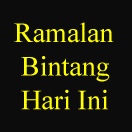Also known as radiocarbon dating, a
technique for determining the age of organic samples that are
less than about 35,000 years old. Carbon-14 (14C) is a cosmogenic
isotope, generated by the interaction of cosmic rays
with matter on the Earth. Cosmic rays enter the Earth’s
atmosphere and transform common 12C to radioactive 14C,
which has a half-life of 5,730 million years. Within about 12
minutes of being struck by cosmic rays in the upper atmosphere,
the 14C combines with oxygen to produce radioactive
carbon dioxide. 14C is exchanged with living organisms as
14CO2, and the isotopic clock for dating is set when the
organism dies and stops exchanging 14CO2 with the atmosphere.
Since the initial 14C/12C ratio and the half life 14C are
well known, the present 14C/12C ratio can accurately determine
the age of an appropriate sample. Radiocarbon dating is
widely used to date fossil wood, carbon in sediments, charcoal
from archaeological sites, corals, foraminifera, and
organic material in sediments. Willard F. Libby of the University
of Chicago pioneered the carbon-14 dating technique in
1946.
See also GEOCHRONOLOGY.

















Tidak ada komentar:
Posting Komentar
Catatan: Hanya anggota dari blog ini yang dapat mengirim komentar.